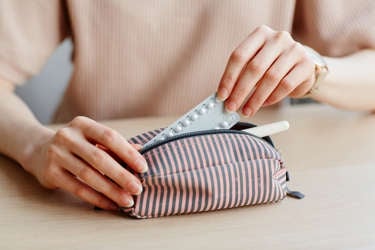If you have active inflammation and painful joints, you might not feel like eating. This can lead to weight loss. On the other hand, if you are taking corticosteroids, you may have an increased appetite. This can lead to excessive weight gain. Therefore, you really need to have a healthy diet. You need to choose healthy foods as much as possible. Reduce empty calorie foods such as sweets, fast foods, salty snacks, and convenience foods. Try to eat at regular intervals and include planned snacks.
If you are overweight or have gained weight due to the side effects of corticosteroids, the extra weight can put stress on your knee, hip and ankle joints. This can increase joint pain. It can even lead to joint damage.
The role of your dietitian or nutritionist
A dietitian or nutritionist is an expert in food and nutrition. Dietitians help promote good health through proper eating. Your dietitian can talk to you about your special diet requirements.
Supplements
You need additional calcium and vitamin D to help make your bones stronger. All young people need this. It is especially important because you have JIA.
Calcium
Calcium builds strong, healthy bones and teeth. It helps your muscles and nerves work properly. If you don’t get enough calcium in your diet, your body will use the calcium stored in your bones to supply the rest of your body. This will make your bones weak. They may become more likely to fracture or break. Most teenagers do not have enough calcium in their daily diet.
Check out this calcium calculator from the BC Dairy Foundation: www.bcdairy.ca/nutritioneducation/programs/interactive-calcium-calculator. It will help you find out what your calcium intake really is!
Vitamin D
Vitamin D helps your body absorb calcium so you can have strong bones.
Sources of calcium and vitamin D
Dairy foods are very high in calcium, especially milk, yogurt, and cheese. Other good sources include calcium-enriched orange juice and enriched rice/soy beverages.
Milk (cow’s milk or enriched soy/rice milk) contains vitamin D. Fish, liver, and egg yolk are the only foods that naturally contain vitamin D. If you do not eat vitamin D rich foods often, you may want to consider taking a vitamin D supplement. Most multiple-vitamin supplements contain vitamin D.
Below is a chart outlining some different food sources of calcium and vitamin D.
| Food item | Serving size | Amount of calcium (mg) | Amount of vitamin D (IUD) |
|---|---|---|---|
| Milk, whole, 2%, 1%, skim | 1 cup | 300 | 100 |
| Yogurt, low fat, plain | 3/4 cup | 300 | Some brands of yogurt contain vitamin D – check labels |
| Milk, evaporated Carnation | 1/4 cup | 165 | 52 |
| Frozen yogurt | 1 cup | 100 | |
| Swiss cheese | 1 oz. | 240 | |
| Processed cheese slices, cheddar | 1 oz. | 170 | |
| Fortified rice | 1 cup | 80 | |
| Fortified orange juice | 1/2 cup | 45 | |
| Fortified margarine | 2 tsp. | 51 |
Other tips for healthy eating
For those with a poor appetite:
- Try to eat small amounts of nutritious foods every two to three hours.
- Choose foods that you like.
- Try to choose a variety of foods from all four food groups.
- Make sure to include high-protein foods during the day.
- Pediasure, Boost, Ensure, or Resource are high calorie drinks that can be used if you have a poor appetite and have lost too much weight. These are supplemental drinks available in the pharmacy.
- You can also make fruit smoothies with full fat milk and yogurt, and add in an egg.
- Choose high calorie foods such as full fat dairy (3.25% milk, ice cream, cheese, and yogurt), meats and alternatives.
- Add extra calories to your food by adding margarine, oil or cream to foods.
Some corticosteroids give a ‘false hunger.’ They tell your body that you are hungry even though your body has what it needs. In addition, your fatigue and joint pain may cause you to be less active. This combination can lead to being overweight, or in some cases, obese.
Below are some tips for healthy eating if you are taking corticosteroids:
- Avoid sweets as much as possible. Instead of juice or soft drinks, drink water. Try to save cookies and cakes for an occasional treat. Have low-calorie, healthy snacks available like raw vegetables, fresh fruits, unsalted crackers and unsweetened cereals. Microwave popcorn is another choice, but try not to add extra butter.
- Avoid fatty foods, like fried foods. Use oil, margarine and butter in small amounts. Switch to lower fat milk (1%) and low-fat yogurt. You can also get low-fat salad dressings and dips.
- Lower salt: Avoid packaged soups and sauces like soy sauce and ketchup, Stay away from preserved meats like hot dogs, sausage, bacon and luncheon meat. Try to look for low salt items.
- Multigrain bread, cereals and pasta, and brown rice contain fibre. This helps you feel fuller and provides more nutrients.
- Increase calcium for strong bones. For a healthy amount, teenagers require four servings per day of calcium. One serving is equal to one cup of milk, one large yogurt container, or one ounce of hard cheese. Make sure to choose lower fat cheese.
- It can be difficult if you want to eat out. Try to choose a place that offers low-calorie options.
- Plan ahead for special activities and events.
- Be as active as possible.
- Find fun or interesting things to do when you get hungry.







